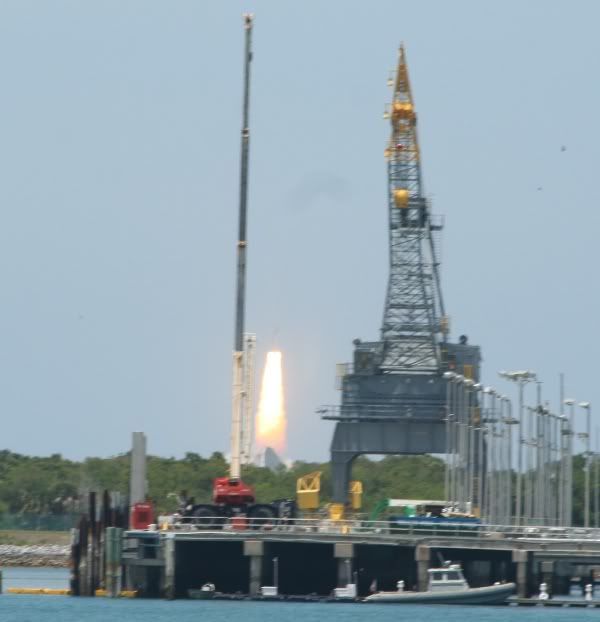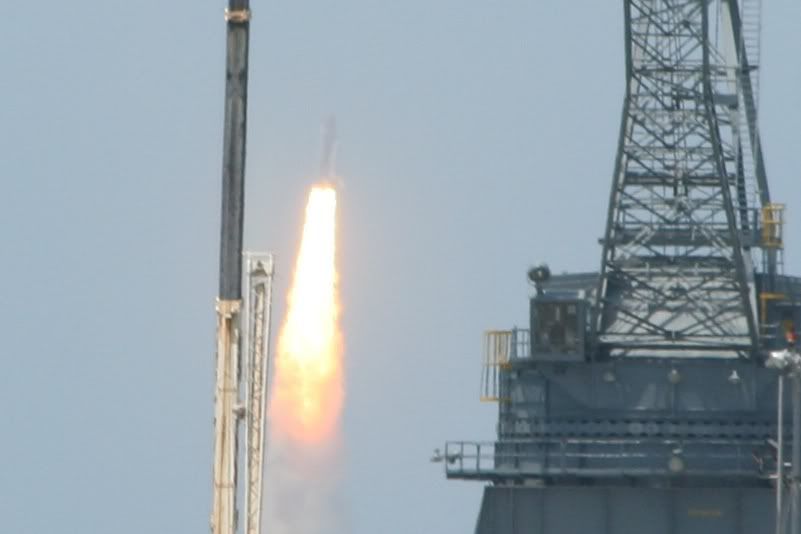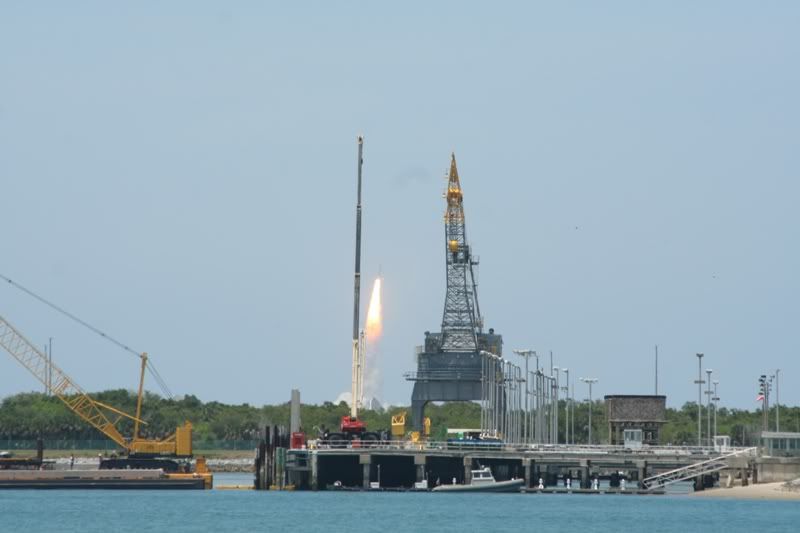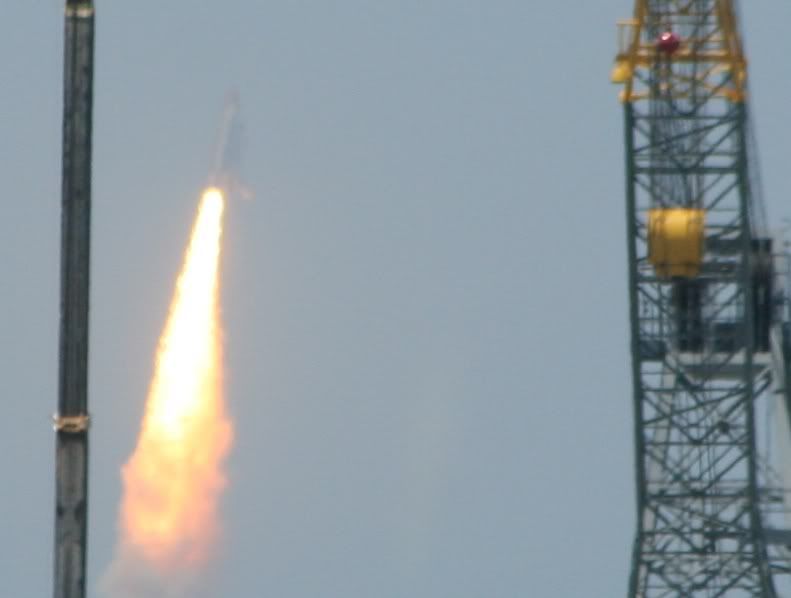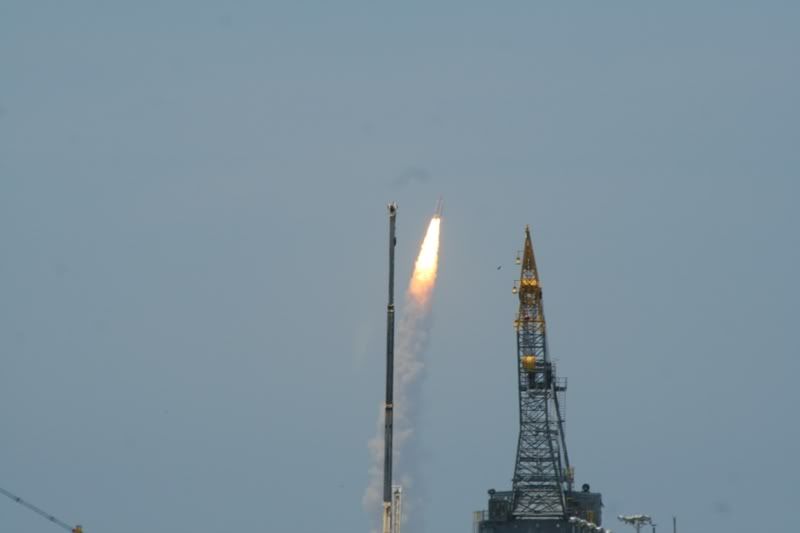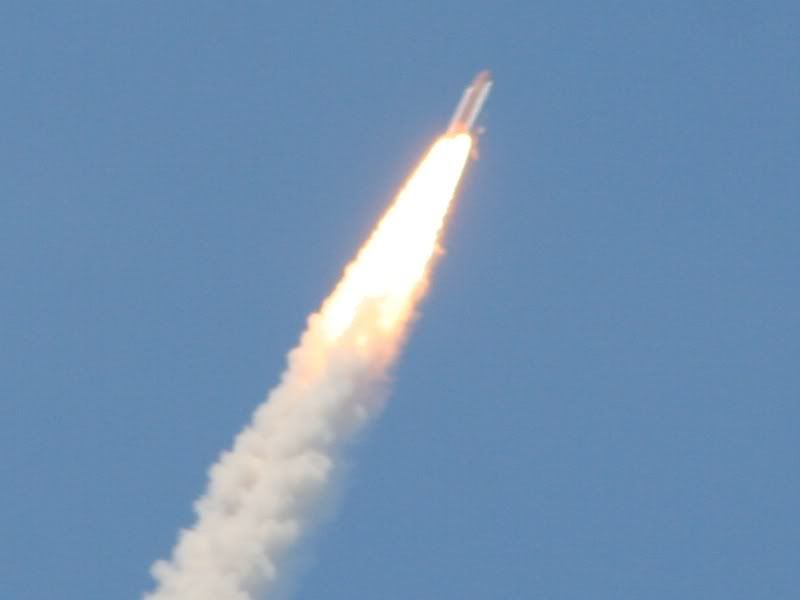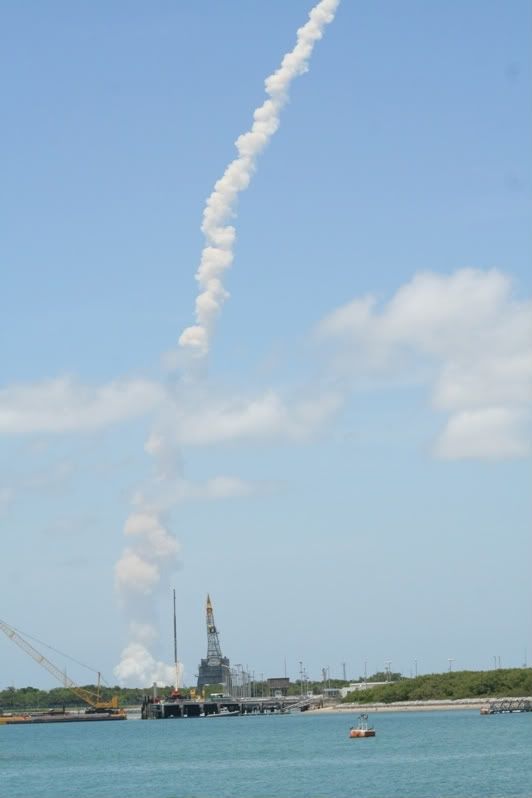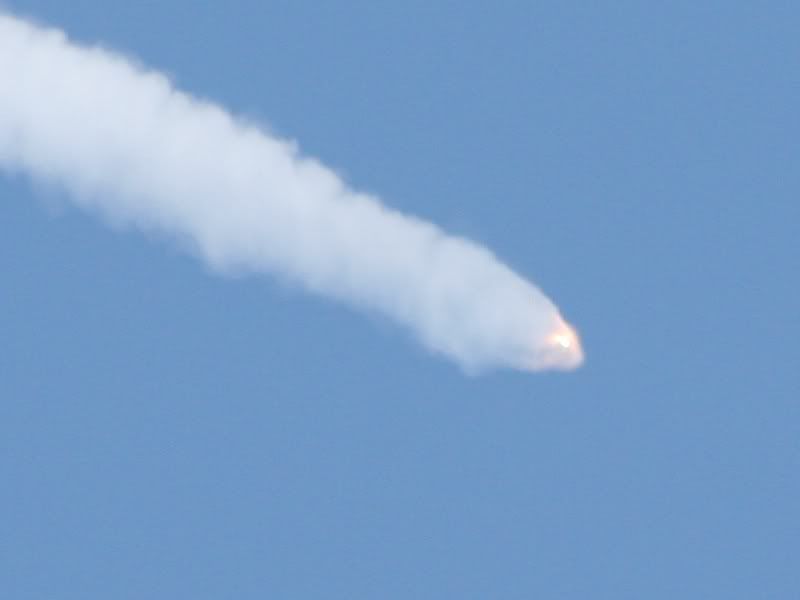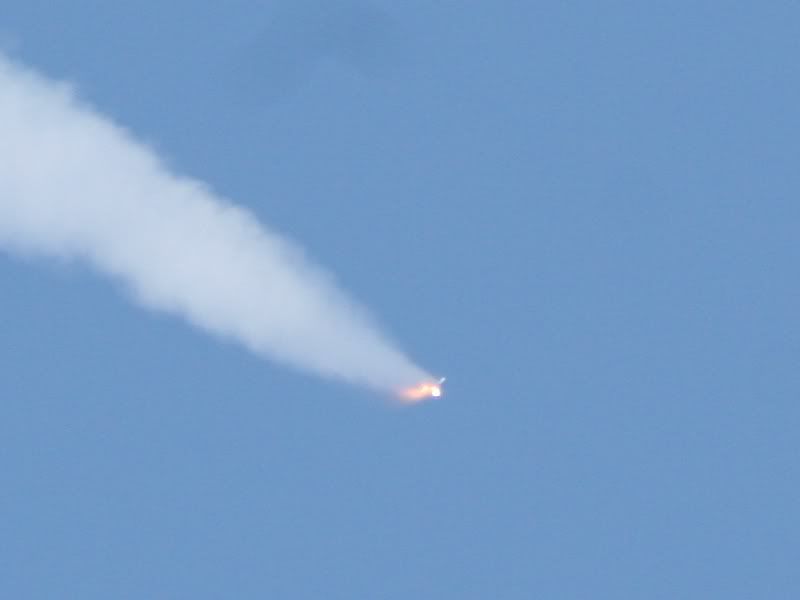Following up on that, why are we trying to make a re-entry capsule go to the moon or an asteroid? Is there any great reason to haul a heat shield and parachutes a couple million miles through empty space? Conversely, a deep space craft needs radiation shielding, which is just useless mass (and probably lots of mass) during launch, re-entry, or in LEO.
As Rusty Schweickart said in 1969 from the lunar module of Apollo 9, then in independent orbit around Earth and unable to re-enter the atmosphere on its own, "Heat shields are for sissies."
That idea brings things back to Earth orbit rendevous configurations, where the launch/re-entry capsule we develop only goes to LEO. Deep space craft are launched seperately, without a crew (because the crew couldn't abort safely during the launch), and then get manned once they're in orbit. Automated docking is already routine for missions to the ISS, so this is no longer and obstacle, and the ISS could serve as the springboard for the missions (as was originally conceived decades ago).
Next we come to landing/return craft capable of landing on the moon, Mars, Mercury, or a major asteroid like Ceres or Vesta. Since the requirements for such a craft are so radically different than Earth launch and re-entry or deep space operation, it should also be a seperate vehicle, left in orbit around the target body and also designed for re-use.
The point of all this blather (which has been going on in every space forum since the 1960's) is that the capabilities of the craft that gets people up and down to LEO isn't all that important. All of the administration's long term goals could be accomplished even if we used a Soyuz as long as it was supplemented by some sort of heavy lifter to send up the other vehicles. Willey Ley, Von Braun, Korolev, and pretty much every other notable space visionary said the same thing. Even going back to the 50's, the process for becoming a truly space-faring nation was laid out on the cover of magazines like Harpers.
The question is whether we have what it takes politically and managerially to start building the craft we need instead of trying to shoe-horn the craft we're funding into things they aren't good at doing, or defending the limited capabilities of the craft in service as what we should be doing.
Whether you philosophically support NASA, Spaceship One, SpaceX, or the big aerospace firms, don't fall into the trap of thinking that what they have done, can do, or want to do shows the truth of your position, or that rearrangements of program management charts prove progress. These organizations and companies are tools, stepping stones along the path, who need to sell you on the benefits of their products and will confuse you by drawing your focus from the long term onto what their product can deliver in the short term.
For example, how many Shuttle orbits should it have taken to show that the program was just going to go around in circles? From its inception in the mid-70's we were told that this technological wonder would provide us with cheap and convenient access to space, that it would build our future in space, etc. Is six or seven people going around in circles in low orbit for a few weeks a year, for three decades, our future in space? Is that all there is? Is that all it takes to satisfy space buffs?
A generation of children has grown up thinking their future was in space. Somehow they've been content as long as a few geeks and jocks made very occassional and brief multi-billion dollar forays to nowhere, performing missions that none of use can quite recall, but usually something to do with commerical satellites. We focused on the complexities and capabilities of the craft, what it could do, instead of what it couldn't do. What it couldn't do, or rather what we wouldn't do, is insist on faster, farther, further. Space is an unexplored ocean and we were content with a cross-bay ferry slash garbage barge, thinking that made us a space-faring nation. The technological complexity of what we could put in space was substituted for a measure of mastery of space. We operated the sweetest cross-bay ferry ever built or conceived, with a guilt bowsprit and luxurious accomodations. What we didn't do is venture out to explore the vast oceans, because the cross-bay ferry program was too busy achieving important goals to prove the wisdom of maintaining a cross-bay ferry program. The ferry is being retired and replaced, but let us not fall into the same trap of thinking the new ship's capabilities define the mission and the need.
As Rusty Schweickart said in 1969 from the lunar module of Apollo 9, then in independent orbit around Earth and unable to re-enter the atmosphere on its own, "Heat shields are for sissies."
That idea brings things back to Earth orbit rendevous configurations, where the launch/re-entry capsule we develop only goes to LEO. Deep space craft are launched seperately, without a crew (because the crew couldn't abort safely during the launch), and then get manned once they're in orbit. Automated docking is already routine for missions to the ISS, so this is no longer and obstacle, and the ISS could serve as the springboard for the missions (as was originally conceived decades ago).
Next we come to landing/return craft capable of landing on the moon, Mars, Mercury, or a major asteroid like Ceres or Vesta. Since the requirements for such a craft are so radically different than Earth launch and re-entry or deep space operation, it should also be a seperate vehicle, left in orbit around the target body and also designed for re-use.
The point of all this blather (which has been going on in every space forum since the 1960's) is that the capabilities of the craft that gets people up and down to LEO isn't all that important. All of the administration's long term goals could be accomplished even if we used a Soyuz as long as it was supplemented by some sort of heavy lifter to send up the other vehicles. Willey Ley, Von Braun, Korolev, and pretty much every other notable space visionary said the same thing. Even going back to the 50's, the process for becoming a truly space-faring nation was laid out on the cover of magazines like Harpers.
The question is whether we have what it takes politically and managerially to start building the craft we need instead of trying to shoe-horn the craft we're funding into things they aren't good at doing, or defending the limited capabilities of the craft in service as what we should be doing.
Whether you philosophically support NASA, Spaceship One, SpaceX, or the big aerospace firms, don't fall into the trap of thinking that what they have done, can do, or want to do shows the truth of your position, or that rearrangements of program management charts prove progress. These organizations and companies are tools, stepping stones along the path, who need to sell you on the benefits of their products and will confuse you by drawing your focus from the long term onto what their product can deliver in the short term.
For example, how many Shuttle orbits should it have taken to show that the program was just going to go around in circles? From its inception in the mid-70's we were told that this technological wonder would provide us with cheap and convenient access to space, that it would build our future in space, etc. Is six or seven people going around in circles in low orbit for a few weeks a year, for three decades, our future in space? Is that all there is? Is that all it takes to satisfy space buffs?
A generation of children has grown up thinking their future was in space. Somehow they've been content as long as a few geeks and jocks made very occassional and brief multi-billion dollar forays to nowhere, performing missions that none of use can quite recall, but usually something to do with commerical satellites. We focused on the complexities and capabilities of the craft, what it could do, instead of what it couldn't do. What it couldn't do, or rather what we wouldn't do, is insist on faster, farther, further. Space is an unexplored ocean and we were content with a cross-bay ferry slash garbage barge, thinking that made us a space-faring nation. The technological complexity of what we could put in space was substituted for a measure of mastery of space. We operated the sweetest cross-bay ferry ever built or conceived, with a guilt bowsprit and luxurious accomodations. What we didn't do is venture out to explore the vast oceans, because the cross-bay ferry program was too busy achieving important goals to prove the wisdom of maintaining a cross-bay ferry program. The ferry is being retired and replaced, but let us not fall into the same trap of thinking the new ship's capabilities define the mission and the need.

 We could even see the boosters through the camera lens! We heard it and sort of felt it about 20-30 seconds after lift-off.
We could even see the boosters through the camera lens! We heard it and sort of felt it about 20-30 seconds after lift-off.  In fact, when they came back home, the sonic boom would sometimes knock stuff off the walls! But this launch beat all of them!!!!
In fact, when they came back home, the sonic boom would sometimes knock stuff off the walls! But this launch beat all of them!!!! 
